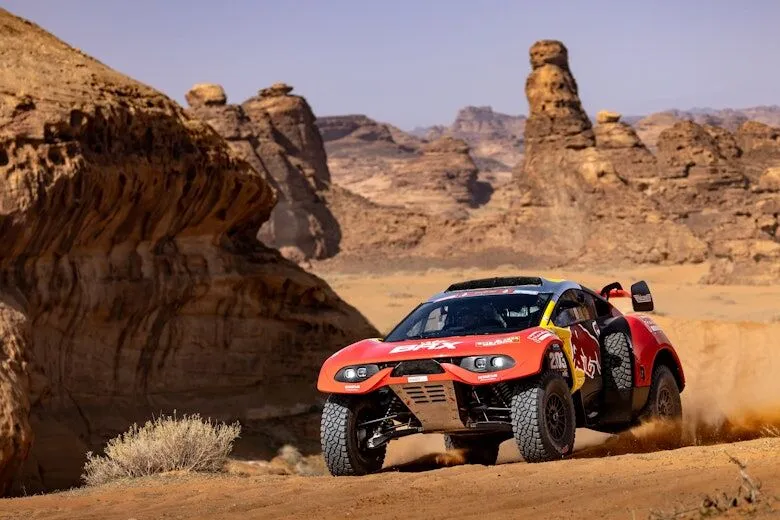Despite narrowing the gap to leader Sainz, Sébastien Loeb faces an uphill battle to surpass the Audi team.
With just two stages remaining in the Dakar, victory seems within Loeb’s grasp after eight years of attempts, provided he can make up the 13 minutes and 22 seconds deficit to Carlos Sainz.
Wednesday appeared promising for Loeb on paper, as he gained an additional seven minutes on Sainz. However, the day was fraught with challenges. Hydraulic jack malfunctions and two punctures slowed his progress, resulting in a loss of 12 minutes.
Yet, despite the setbacks, Loeb remains in contention. However, he confronts two significant obstacles: the formidable competition and persistent issues with his car.
Operating under the Bahrain Raid Xtreme banner, Loeb’s entry is a solitary Prodrive Hunter against the Audi squad, bolstered by multiple support vehicles. While Sainz’s Audi faced its own troubles, he received immediate assistance from teammates Stéphane Peterhansel and Mattias Ekström, ensuring minimal time loss.
In contrast, Loeb’s teammate, Nasser Al-Attiyah, withdrew from the race due to technical problems, leaving Loeb to navigate the challenges alone.
Acknowledging Al-Attiyah’s departure, Loeb remained pragmatic, recognizing that each competitor pursues their own rally objectives. The Hunter’s susceptibility to punctures, exacerbated by exhaust heat, compounds Loeb’s challenge.
Strategically, Loeb is at a disadvantage, needing to make up significant time in the final stages. The terrain presents additional challenges, with rough, rock-strewn conditions increasing the risk of punctures. Loeb’s road position offers both advantages and disadvantages: while he benefits from established tracks, he faces heightened puncture risks from dust.
With Peterhansel ahead and Sainz trailing closely, Loeb must navigate carefully to optimize his chances of success.

